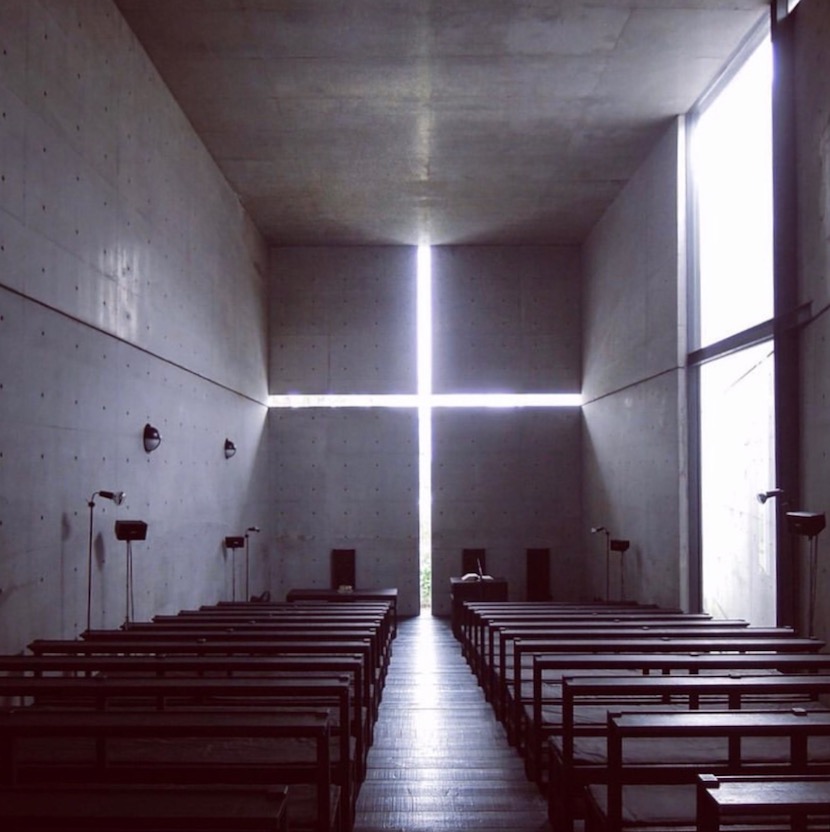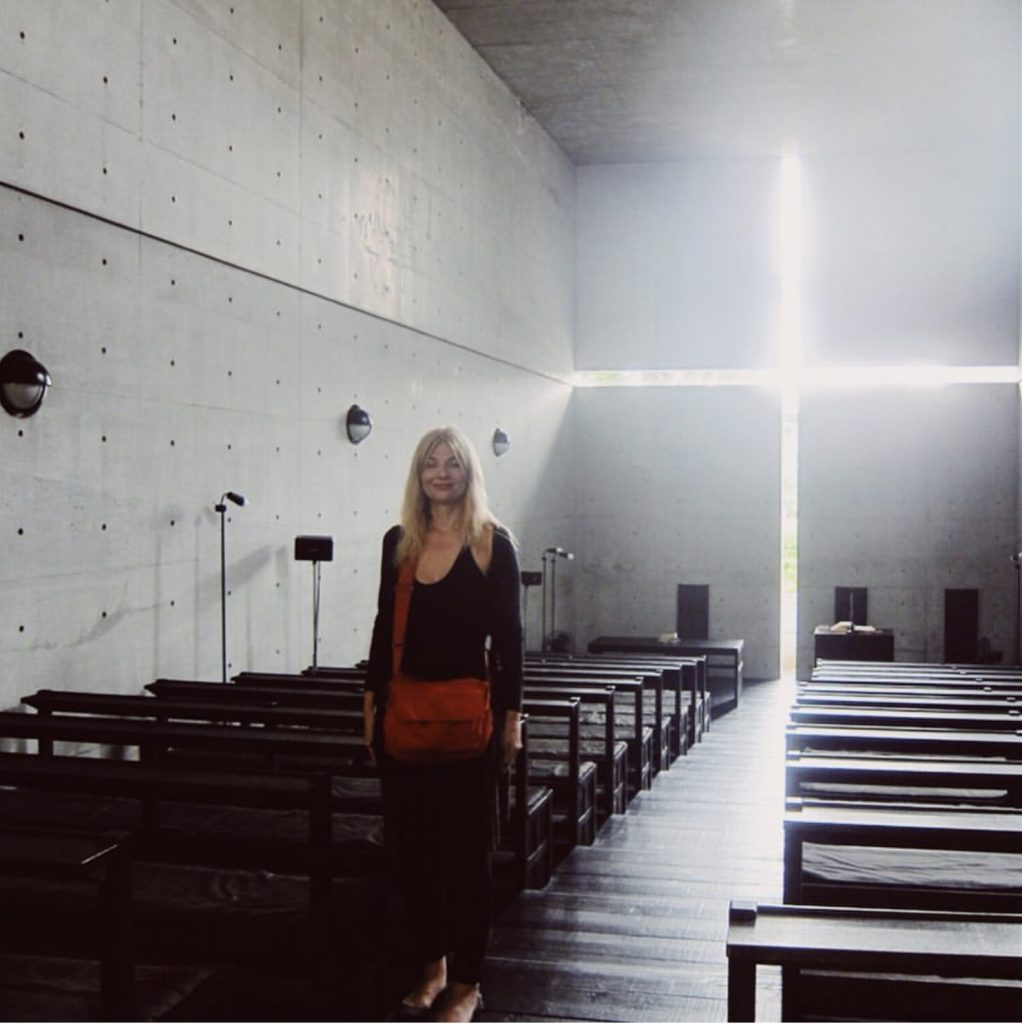Probably one of my absolute favorite architects is Tadao Ando. I’m enchanted by Brutalist architecture and how it makes me feel. It strips all the non-essentials. The focus is on the light, materials, and flow of space and simplicity.

Church of the Light
It’s worth traveling across the world just to see it – Ando’s Church of the Light. I had planned to visit well in advance. For the architecture lovers there are only a few slots available to visit once a month. Even though it’s a masterpiece, its core purpose is to serve the parishioners. I respect preserving the original purpose and integrity of the church. Once a month there are a few precious hours that you can enjoy it as an architectural gem. I sincerely appreciate the generous staff for opening the Church of the Light for us. Even for just for a precious few hours, we could experience this unique space. Undoubtedly, its utmost simplicity speaks volumes. The minimalist design makes it achingly profound.
All at once, I felt an immense sense of calm and peace. Even though it is on a tiny slot of land, the space creates its own universe. The architecture makes me feel elated.

As all things artificial, buildings are destined to weather and someday disappear. One might even say that the history of architecture represents humanity’s will to resist this fate. Personally, however, what I wish to create are buildings that will live on internally, not in substance or form, but as memories within people’s hearts.
Tadao Ando
The Architect, Tadao Ando
Tadao Ando is a Japanese self-taught architect. Back in 1995, he won the Pritzker Prize for architecture. Ando worked as a boxer before becoming an architect. He has achieved phenomenal work despite never having formal training in the field. During his adolescence, he was struck by the Frank Lloyd Wright-designed Imperial Hotel and decided to end his boxing career to pursue architecture.
My response to the building was a purely emotional one as I had no knowledge of the technical and cultural complexities of architecture. I was shocked yet intrigued to know that architecture could induce a feeling akin to exploring a whole new world.
Ando’s response on Frank Lloyd Wright’s architecture
Ando’s architectural style emphasizes nothingness to represent the beauty of simplicity. The simplicity of his architecture focuses on the sensation of physical experiences. This concept is mainly influenced by Japanese culture. Furthermore, Ando’s bulidings primarily constructed with concrete in order to enact the idea of simplicity.
NOTE: Please remember, if you go, that you cannot see it without reserving time in advance. This is their website with all the information.
